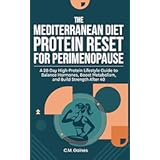Globally, more than 1.9 billion adults are overweight. Approximately 650 million are classified as obese. These figures show a pressing need for effective dietary strategies. The video above highlights a surprising contender in the realm of fat loss. Dr. Eric Berg names grass-fed meat as the top fat-burning food. This claim is supported by its unique metabolic properties. It influences powerful fat-burning hormones. This food does not trigger fat-storing insulin. Instead, it offers nutrient density. Furthermore, it boasts high thermogenic properties. Such qualities actively support your metabolism.
Unlocking Metabolic Power: How Grass-Fed Meat Influences Hormones
Insulin is a critical hormone. It plays a primary role in fat storage. When carbohydrates are consumed, insulin levels typically rise. This signals the body to store excess glucose as fat. However, grass-fed meat behaves differently. Protein and healthy fats are its main components. These macronutrients elicit minimal insulin response. This prevents the body from entering a fat-storage mode. Consequently, the body is encouraged to burn fat for energy.
The video points to a “most powerful fat-burning hormone.” While specific names are not given, several hormones are involved. Glucagon is one such hormone. It works in opposition to insulin. Glucagon helps release stored fat for energy. Growth hormone also promotes fat breakdown. Epinephrine and norepinephrine are stress hormones. They can also enhance fat burning. Protein intake supports optimal function of these hormones. This metabolic advantage is not insignificant. It contributes to effective weight management.
Thermogenesis Explained: Grass-Fed Meat and Calorie Expenditure
The concept of thermogenesis is crucial. It describes the energy expended during food digestion. This is known as the Thermic Effect of Food (TEF). Protein has the highest TEF among macronutrients. Research suggests that 20-30% of protein calories are burned during digestion. In contrast, carbohydrates only burn 5-10% of their calories. Dietary fats burn even less, typically 0-3%. This significant difference means that more calories are used up simply by eating grass-fed meat. This boost to daily energy expenditure is often underestimated. It offers a metabolic advantage. Consequently, fat burning is promoted throughout the day.
Beyond Calories: The Nutrient Powerhouse of Grass-Fed Meat
Grass-fed meat is lauded for its nutrient density. This means it provides many nutrients per calorie. This is unlike many processed foods. These foods offer empty calories. Nutrient-dense foods truly feed your metabolism. They provide essential building blocks for bodily functions.
Essential Vitamins and Minerals for Metabolic Health
A rich profile of vitamins is found in grass-fed meat. B vitamins are especially abundant. Vitamin B12 is vital for energy production. It assists in converting food into usable energy. Iron is also present in significant amounts. Heme iron is easily absorbed. It is crucial for oxygen transport throughout the body. Furthermore, zinc supports immune function. It also plays a role in metabolism. Selenium contributes to thyroid hormone production. A healthy thyroid is essential for a robust metabolism.
Beneficial Fats: Omega-3s and CLA
The fat composition of grass-fed meat is superior. It contains higher levels of beneficial fats. Omega-3 fatty acids are a prime example. These anti-inflammatory fats are typically 2-5 times more concentrated. This contrasts sharply with grain-fed beef. Omega-3s support cellular health. They also reduce inflammation. Conjugated Linoleic Acid (CLA) is another key compound. Grass-fed beef boasts higher CLA levels. Studies indicate CLA may help reduce body fat. It can also increase lean muscle mass. This unique fatty acid profile contributes to its fat-burning reputation.
Satiety and Muscle Mass: Cornerstones of Fat Loss
Protein is exceptionally satiating. This means it helps you feel fuller for longer periods. High-protein meals reduce hunger pangs. Consequently, overall calorie intake is often lowered. This natural reduction in appetite is a powerful tool for weight loss. Individuals are less likely to overeat.
Moreover, protein is fundamental for muscle preservation. When you lose weight, some muscle mass can be lost. However, adequate protein intake helps protect muscle tissue. Muscle is metabolically active. It burns more calories at rest than fat tissue. Maintaining or even increasing muscle mass can boost your resting metabolic rate. This effectively turns your body into a more efficient fat-burning machine. Grass-fed meat provides all essential amino acids. These are necessary for muscle repair and growth.
Integrating Grass-Fed Meat into Your Dietary Strategy
Incorporating grass-fed meat into your diet is straightforward. Sourcing is the first step. Look for local farms or specialty butchers. Ensure the “grass-fed” label is certified. Consider various cuts. Leaner cuts might be preferred for some. However, the fat in grass-fed meat is beneficial.
Cooking methods are also important. Grilling, roasting, or slow-cooking are excellent options. These methods preserve nutrients. They also enhance flavor. Portion sizes should be reasonable. A serving size of 3-6 ounces is typically recommended. This provides ample protein. It contributes to satiety.
- **Diverse Meal Planning:** Pair grass-fed meat with a variety of non-starchy vegetables. This ensures a balanced intake of fiber and micronutrients.
- **Mindful Eating:** Pay attention to hunger and fullness cues. Enjoy your meals without distraction.
- **Consistent Inclusion:** Aim to include grass-fed meat regularly. This supports consistent metabolic benefits.
The emphasis on grass-fed meat is well-placed. Its unique composition helps your body. It manages insulin effectively. It also burns more calories during digestion. This nutrient-dense food supports fat-burning hormones. It also helps preserve muscle mass. This makes grass-fed meat a strong contender. It certainly earns its reputation as a top fat-burning food.











